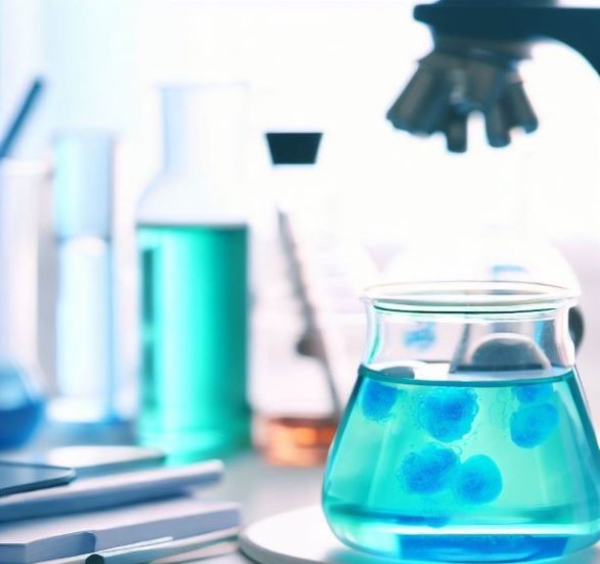
The Pros and Cons of In Vitro Models for Cancer Research
In the context of biomedical research, in vitro models refer to experiments or tests performed in a controlled environment outside of a living organism, such as in test tubes or petri dishes. It is a counterpart to in vivo research, which takes place within living organisms.
The term 'in vitro', which translates to 'in glass,' denotes the traditional tools used in these experiments (e.g. glass labware). In vitro models have become fundamental tools in cancer research, allowing for the study of cancer cells in isolation to understand their behavior and test potential therapies.
Advantages of In Vitro Models
Ethical Considerations
In vitro models significantly decrease the reliance on animals for research. These models enable scientists to study cancer cells' growth, proliferation, and response to treatments without involving animal models. This is an essential benefit, considering the growing global emphasis on reducing animal use in research for ethical reasons.
And, with in vitro models, researchers can avoid submitting animal study protocols to Institutional Animal Care and Use Committees (IACUCs). This reduces administrative burdens, accelerates the research process, and further supports the ethical stance of minimizing animal use in experiments.
Efficiency and Scalability
Due to the ease of cell culture in controlled environments and the ability to standardize conditions, in vitro methods have become the go-to for pharmaceutical industries when large-scale production is needed. These methods allow for quicker, more efficient production processes compared to animal models.
Culturing cells in vitro also offers the ability to tightly control the research environment. It allows scientists to manipulate specific variables (e.g. temperature, pH, nutrient availability) and observe their effects on cancer cell growth, which can be significantly more challenging in vivo.
Cost-effectiveness
In vitro models can be more cost-effective when it comes to large-scale production. While initial set-up costs may be high, the long-term expenditure for maintaining in vitro cultures can be considerably less than the costs associated with animal maintenance and care.
High Quality Monoclonal Antibody (mAb) Production
Thanks to semipermeable-membrane-based systems, in vitro methods can produce high concentrations of monoclonal antibodies, often matching those found in ascitic fluid.
Furthermore, unlike the mouse ascites method — another technique for producing mAb, where hybridoma cells (cells that produce a specific antibody) are injected into a mouse where they stimulate the production of a fluid (ascites) rich in the desired antibodies — in vitro models can produce monoclonal antibodies free of mouse contaminants. This results in a cleaner product, which is particularly advantageous for subsequent studies.
Speed and Accuracy
In vitro testing methods can provide results within days or weeks, significantly faster than animal testing which can take months. Plus, human-derived in vitro models typically provide a more accurate representation of how human cells respond to various treatments. This can lead to more accurate predictions of drug efficacy and safety in humans, as opposed to the extrapolation needed from animal testing.
Customized Tumor Models
Modern in vitro tumor models can simulate critical steps in metastasis, including invasion, intravasation, and extravasation. This is particularly important for understanding the complex biology of cancer and finding ways to interrupt these processes.
Advances in in vitro modeling technology also support the creation of more complex and physiologically relevant models, which can include multiple cell types, various components of the extracellular matrix, and temporal introduction of soluble factors, leading to a more accurate representation of the tumor microenvironment.
Precision Medicine
In vitro models can be customized with patient-derived cells, helping researchers study the tumor's unique characteristics and potentially find personalized therapeutic strategies.With the ability to replicate the patient's tumor behavior accurately, in vitro models can be instrumental in clinical management.
They can help predict the tumor's metastatic potential and responsiveness to different treatments, allowing physicians to make informed decisions about patient care. These models also offer a way to study the mechanisms of metastasis, paving the way for the development of therapies to halt or slow down the spread of cancer cells.
Cons:
Challenges with Cultures
Certain hybridomas do not grow well in culture, or they may be lost during the culturing process. This can hinder the efficiency of the in vitro production of monoclonal antibodies.
Fetal Bovine Serum (FBS) Requirement
In vitro methods typically require the use of FBS, which can limit the applicability of certain antibodies. This is due to the presence of bovine immunoglobulins in FBS, which can cross-react with anti-species antibodies, potentially impacting the research findings. Logistics aside, the use of FBS can be contentious ethically. Obtaining FBS involves invasive procedures on bovine fetuses, raising serious questions about animal welfare.
mAb Quality Concerns
In vitro methods may result in improper glycosylation of the produced antibodies. Glycosylation, the addition of sugar molecules to antibodies, can significantly impact the function and properties of the antibodies. If not done correctly, it can increase immunogenicity, reduce binding affinity, cause changes in biologic functions, or accelerate clearance in vivo, potentially rendering the antibody unsuitable for in vivo experiments.
Lower Concentrations in mAb Production
Batch-culture supernatants typically contain less mAb per milliliter of medium compared to the mouse ascites method. This necessitates concentration steps, which can be time-consuming, expensive, and potentially alter the antibody's affinity or denature it. Additionally, batches of mAb produced by membrane-based in vitro methods often contain dead hybridoma cells and their byproducts, necessitating early and costly purification steps before further study.
Limitations in Representing In Vivo Conditions
Even the most advanced in vitro model cannot entirely recreate the complex, dynamic, and three-dimensional environment of the human body. For instance, they often lack the immune system's components, the various cell-cell and cell-matrix interactions, and the effects of systemic factors like hormones. This limitation can hinder the extrapolation of in vitro findings to in vivo conditions.
LIDE delivers innovations in oncology translational research and immuno-oncology. Contact Global Vice President, Josh Caggiula today to learn more about our first-class research capabilities.